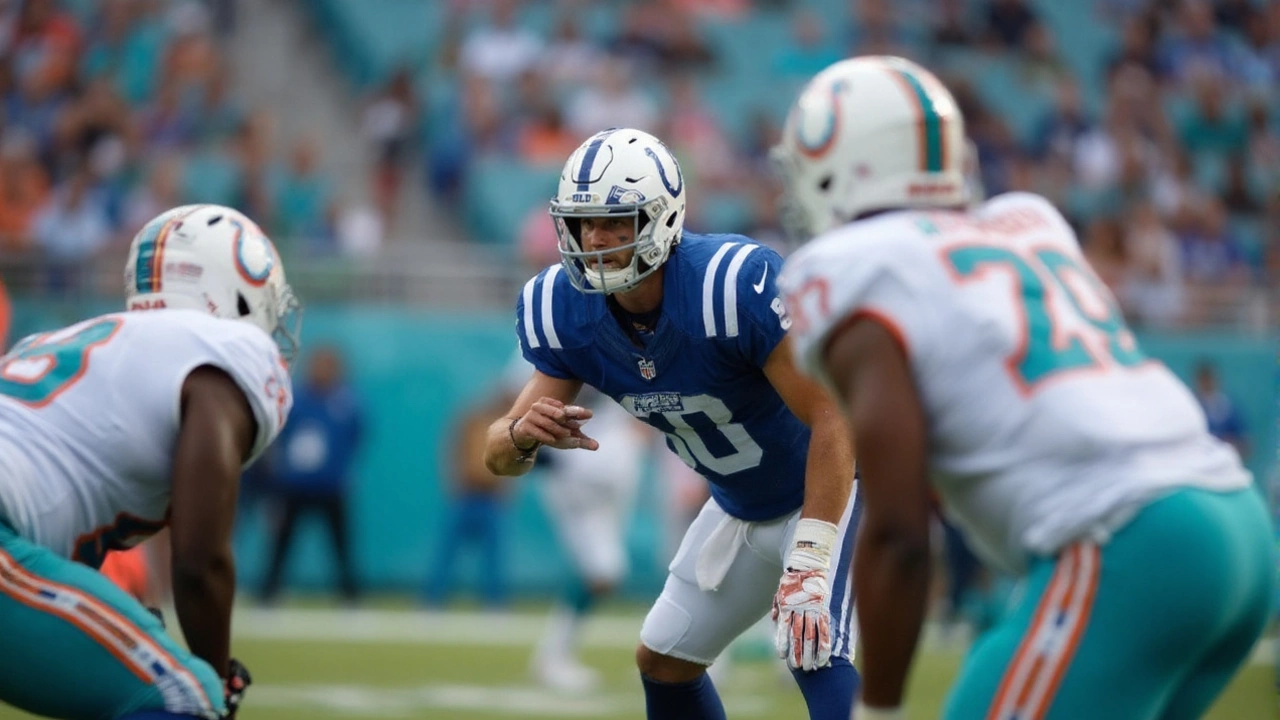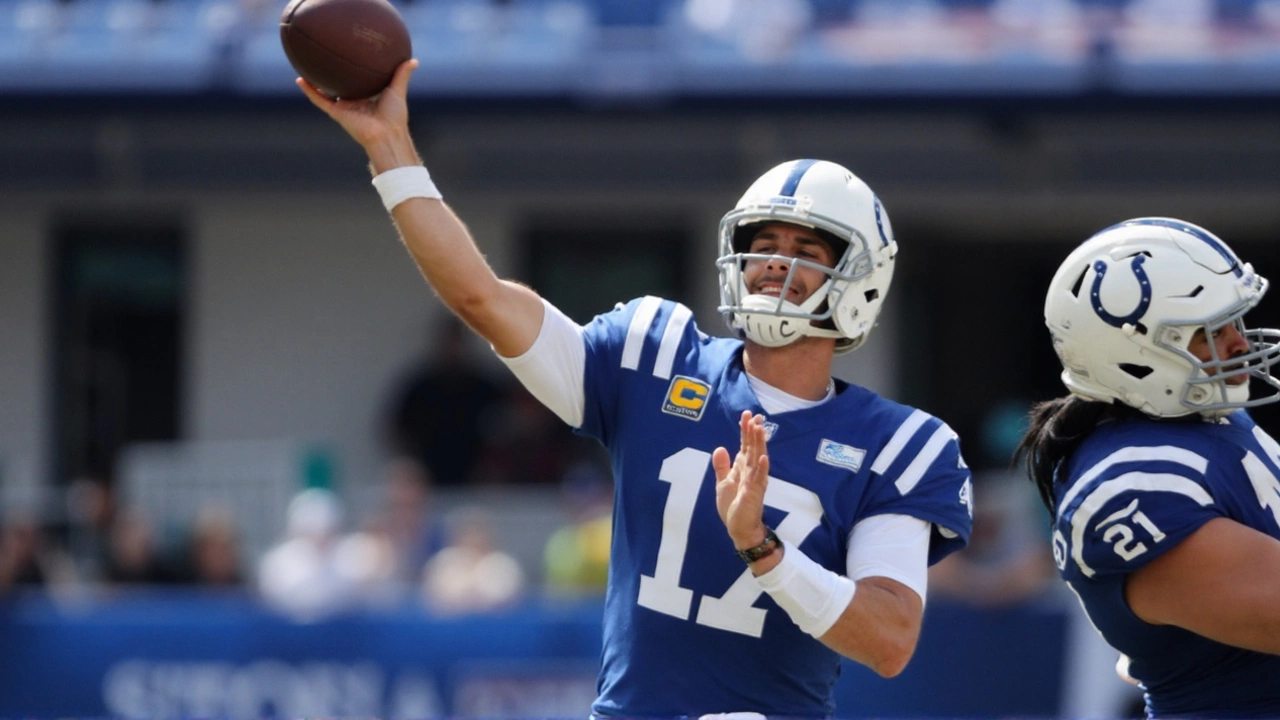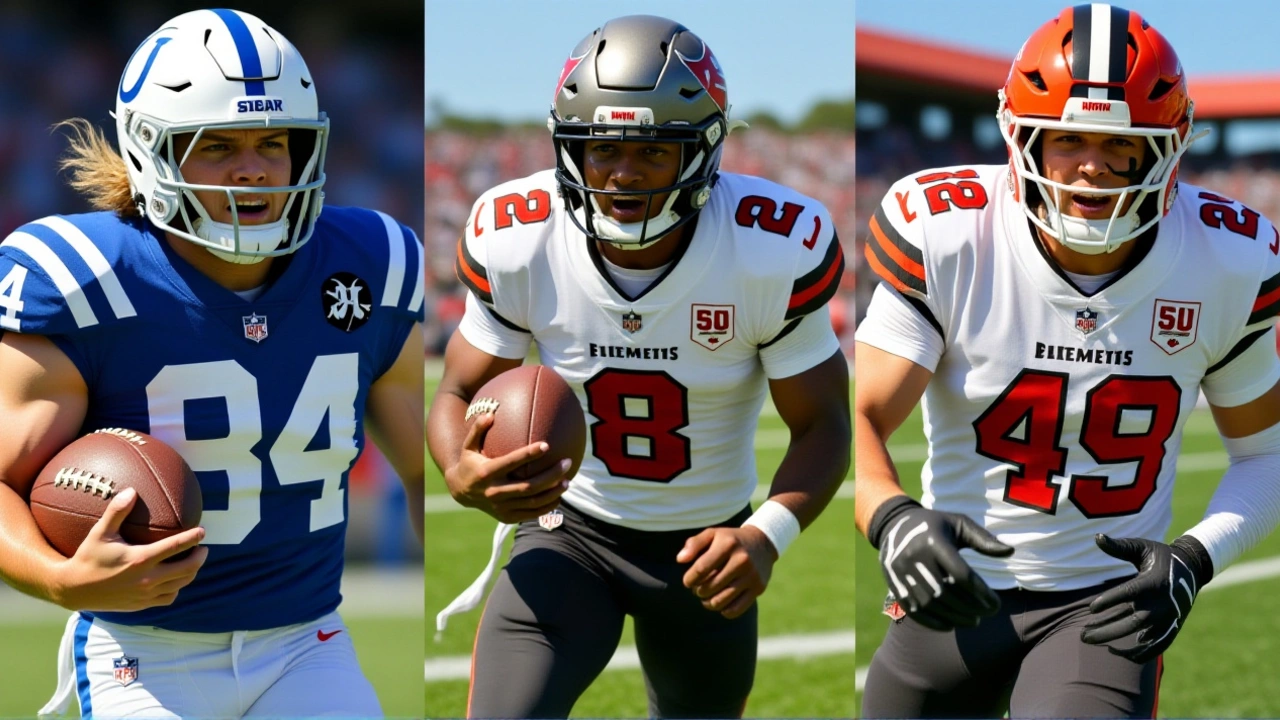Week 1 belonged to Daniel Jones — and a franchise tired of slow starts
An 11-year opening-day skid ended with a jolt. The Colts didn’t just beat Miami; they rolled, 33–8, behind a poised debut from Daniel Jones that checked every box the staff laid out when they handed him the job three weeks ago. Efficiency, ball security, command — he had it all, and the offense never stalled. Seven possessions, seven scoring drives. In a league built on chaos, that’s about as clean as it gets.
Jones went 22-of-29 for 272 yards and a touchdown, and he added two short rushing scores on sneaks. He owned the first half with 197 passing yards — the best opening act of his career — and the tone never changed. He took one sack, turned it over zero times, and kept the Colts on schedule drive after drive. Indy didn’t chase explosives; they took what Miami gave them and finished drives. That alone is new air for this franchise in Week 1.
There’s symbolism here too. Jones’ last win as a starter came on Oct. 6, 2022, back when he wore blue for the Giants. Since then, setbacks and questions piled up. Monday felt like a reset — not a declaration that everything’s fixed, but a clear look at why the Colts believed his experience and pre-snap control could stabilize them right now.
- 22-of-29 passing (75.9%)
- 272 passing yards, 1 TD
- Two one-yard rushing touchdowns
- 197 first-half passing yards (career high for a first half)
- Zero turnovers, one sack taken
- Seven drives, seven scores
He kept the tempo steady, used motion to diagnose coverage, and adjusted protections when Miami showed pressure. The quick game popped early. Play-action created easy crossers. When the Dolphins rolled another defender into the box, Jones checked to runs or hit his outlet. Calm decisions added up to a long day for Miami’s defense.
Miami tried heat in spots, but the ball was out fast. On longer-developing snaps, Jones drifted subtly in the pocket rather than bailing, buying beats for his receivers to uncover. He didn’t force throws between safeties. He didn’t drift into edge pressure. That’s how you end up with one sack across four quarters and no giveaway chances.
One thing that stood out: red-zone poise. The Colts didn’t get cute near the goal line. They leaned on the line, trusted sneak leverage, and let Jones use his frame to finish. That steadiness carried over to third down too. Instead of hunting hero balls, he found the stick route, the chip release, the back in space — the low-stress answers this scheme is designed to generate.
The staff’s fingerprints were all over it. The plan married formations and tendencies, then broke them at the right time. Timing throws off play-action, screens to slow the rush, layered routes that asked Miami’s linebackers to pick a poison — this was fully integrated football, not a QB freelancing. The chemistry looked real, which is notable considering the short runway between his signing and the opener.
It helped that the protection was sturdy. The interior held up against stunts, and the tackles kept the arc wide enough for Jones to step through. The backs chipped and released cleanly. When the Dolphins presented nickel pressure, Jones either spun it to the quick slant or reset the protection to buy the shot he wanted. Those are veteran touches that don’t show up in the box score but drive a coordinator’s blood pressure down.
About the receivers: they won the leverage battles that this offense needs. Crossers versus man, sit routes versus zone, option routes with sight adjustments — the rhythm was there. The tight ends did work in the seams, and the backs were useful in the flats. You could see the trust. Jones threw on time and to spots, not just to numbers on a jersey.
The bigger story sits above the stat line. Indy started 1–0 for the first time since 2013. For a franchise that has tripped out of the blocks for more than a decade, that matters. Wins don’t carry interest into Week 2, but they do reset a locker room’s belief. Jones put that into words after the game: it’s a good start, but there’s a lot to clean up, and this group knows it.

How the QB call looks now — and what comes next
The Colts made their choice three weeks before kickoff: experience over potential in the short term. Anthony Richardson is the future, and the organization has been clear about that. But Week 1 asked for stability — clean operation, quick answers, protection checks — and Jones delivered the template. After a night like this, the job is his to keep.
What does sustainability look like? Defenses will widen the flats, sit on the quick game, and try to force tighter window throws outside the numbers. They’ll heat him with late safety pressure when the Colts show condensed sets. That’s the chessboard now. The counter is to keep marrying run and pass looks, lean on tempo when they like a matchup, and pick their deep shots when safeties cheat downhill.
Indy doesn’t need Jones to play superhero. They need him to run the offense on time and leave the defense with bad field position, not messes to clean up. That’s exactly what happened against Miami. No sudden-change moments. No short fields given away. Drive after drive, the Colts owned the flow and let their defense hunt with a lead.
There’s also the human side. Quarterbacks rebuilding confidence don’t do it with one throw. They do it with weeks like this — clear reads, positive down-and-distance, drives that end in points. That’s how habits form. This staff will stress that. Stack good decisions. Make the boring play. Break tendency when you’ve earned it.
For the locker room, the message is simple: the operation works when everyone is on script. That means receivers winning on time, backs anchoring blitzers before leaking out, linemen passing off games, and the QB trusting the structure. The Dolphins game was a proof-of-concept performance for all of it.
What about Richardson? Expect the Colts to keep building his week-to-week plan without rushing. Packages can exist without chaos, but after a flawless offensive night, there’s no need to force anything. Development can run parallel to winning if the room stays aligned on roles and the plan is communicated well.
There’s a bigger arc here too. The AFC South is won by teams that avoid self-inflicted damage. Clean football travels — to bad weather, to loud stadiums, to December. Jones doesn’t have to outduel every star on the schedule. He has to keep the Colts out of losing plays and let the roster’s strengths show up. If Week 1 is any guide, this formula gives them a lane.
As for Miami, they’ll look at the film and see missed pressure opportunities and too many layups allowed in the middle of the field. The Colts targeted soft spots behind linebackers and kept the chains moving. When the Dolphins did get Indy into third-and-medium, Jones found the matchup and fed it. That drains a defense, and it made the fourth quarter academic.
None of this guarantees next week. But what you can bank on is the process: timing, spacing, answers versus pressure, and trust in the run-pass marriage. If that holds, the numbers tend to follow. The Colts didn’t win because of a fluke bounce. They won because their quarterback set a steady rhythm and never gave it back.
One game in, the story isn’t redemption or reinvention. It’s fit. Jones looks comfortable in a system that prizes fast decisions and discipline. The schedule will demand more in spots — deeper shots, late-game heroics, muddy-pocket throws with the season on the line. Those tests will come. For now, Indy finally owns a stress-free Week 1, and a veteran quarterback who played like the adult in the room.

